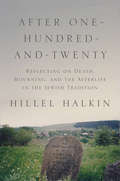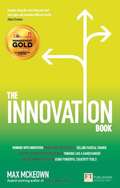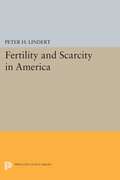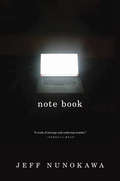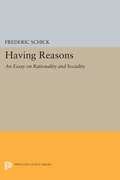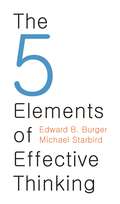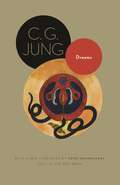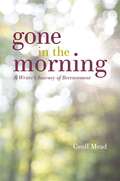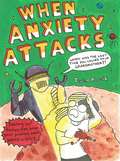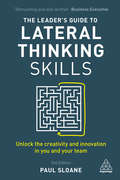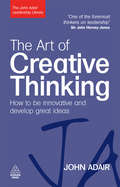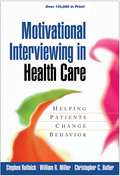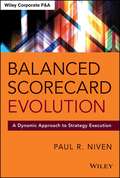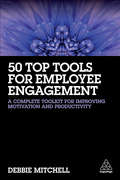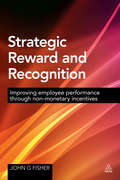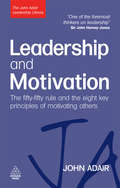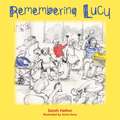- Table View
- List View
After One-Hundred-and-Twenty: Reflecting on Death, Mourning, and the Afterlife in the Jewish Tradition (PDF)
by Hillel HalkinAfter One-Hundred-and-Twenty provides a richly nuanced and deeply personal look at Jewish attitudes and practices regarding death, mourning, and the afterlife as they have existed and evolved from biblical times to today. Taking its title from the Hebrew and Yiddish blessing to live to a ripe old age—Moses is said to have been 120 years old when he died—the book explores how the Bible's original reticence about an afterlife gave way to views about personal judgment and reward after death, the resurrection of the body, and even reincarnation. It examines Talmudic perspectives on grief, burial, and the afterlife, shows how Jewish approaches to death changed in the Middle Ages with thinkers like Maimonides and in the mystical writings of the Zohar, and delves into such things as the origins of the custom of reciting Kaddish for the deceased and beliefs about encountering the dead in visions and dreams.After One-Hundred-and-Twenty is also Hillel Halkin's eloquent and disarmingly candid reflection on his own mortality, the deaths of those he has known and loved, and the comfort he has and has not derived from Jewish tradition.
After One-Hundred-and-Twenty: Reflecting on Death, Mourning, and the Afterlife in the Jewish Tradition
by Hillel HalkinAfter One-Hundred-and-Twenty provides a richly nuanced and deeply personal look at Jewish attitudes and practices regarding death, mourning, and the afterlife as they have existed and evolved from biblical times to today. Taking its title from the Hebrew and Yiddish blessing to live to a ripe old age—Moses is said to have been 120 years old when he died—the book explores how the Bible's original reticence about an afterlife gave way to views about personal judgment and reward after death, the resurrection of the body, and even reincarnation. It examines Talmudic perspectives on grief, burial, and the afterlife, shows how Jewish approaches to death changed in the Middle Ages with thinkers like Maimonides and in the mystical writings of the Zohar, and delves into such things as the origins of the custom of reciting Kaddish for the deceased and beliefs about encountering the dead in visions and dreams.After One-Hundred-and-Twenty is also Hillel Halkin's eloquent and disarmingly candid reflection on his own mortality, the deaths of those he has known and loved, and the comfort he has and has not derived from Jewish tradition.
The Innovation Book (PDF)
by Max MckeownINNOVATION IN ACTION The Innovation Book is your roadmap to creating powerful innovations that deliver success in a competitive world. It answers the following questions: #65533; How do you become a more innovative thinker? #65533; How do you lead and manage creative people? #65533; How can you use innovation tools to get the best results? #65533; How can you engage people with innovation? #65533; How do you avoid pitfalls, problems and screw-ups? With a practical bite-size format, The Innovation Book will help you tackle the really important challenges and seize the most valuable opportunities. "Inspired, ambitious and complete - a must-read for anyone interested in innovation, creativity and invention. " Tom McMail, Ex-Microsoft Strategic Collaborations Director & Academic Innovations Manager "Strips big ideas down to their essence, making the complicated understandable and turning the theoretical into real-world practical. Recommended. " Broc Edwards, SVP, Director of Learning & Leadership
Fertility and Scarcity in America
by Peter H. LindertScholars have charged population growth with lowering aggregate income per capita, depleting natural resources, reducing the quality of the environment, and causing more unequal distribution of income. Maintaining that the order of these concerns should be reversed, Peter H. Lindert emphasizes the tendency of higher fertility and population growth to heighten economic inequalities. His analysis also improves our knowledge of the ways in which economic developments affect fertility.The author develops an integrated model of fertility behavior featuring an original way of defining and measuring the relative cost of an extra child. U.S. fertility patterns in the twentieth century, he shows, are partially explained by the interplay of a model of intergenerational taste formation and fluctuation in relative child costs. His reinterpretation of patterns in the inequality of schooling and income in America highlights the role of fertility and other demographic forces. From the author's analysis it appears that concern over rapid population growth is more justified on income-distribution grounds than on grounds of effects on average per capita income. In showing that this is so, Professor Lindert describes how families' use of time has changed since the late nineteenth century.Originally published in 1978.The Princeton Legacy Library uses the latest print-on-demand technology to again make available previously out-of-print books from the distinguished backlist of Princeton University Press. These editions preserve the original texts of these important books while presenting them in durable paperback and hardcover editions. The goal of the Princeton Legacy Library is to vastly increase access to the rich scholarly heritage found in the thousands of books published by Princeton University Press since its founding in 1905.
Note Book
by Jeff Nunokawa"The hunger for a feeling of connection that informs most everything I've written flows from a common break in a common heart, one I share with everyone I’ve ever really known."—Note BookEvery single morning since early 2007, Princeton English professor Jeff Nunokawa has posted a brief essay in the Notes section of his Facebook page. Often just a few sentences but never more than a few paragraphs, these compelling literary and personal meditations have raised the Facebook post to an art form, gained thousands of loyal readers, and been featured in the New Yorker. In Note Book, Nunokawa has selected some 250 of the most powerful and memorable of these essays, many accompanied by the snapshots originally posted alongside them. The result is a new kind of literary work for the age of digital and social media, one that reimagines the essay’s efforts, at least since Montaigne, to understand our common condition by trying to understand ourselves.Ranging widely, the essays often begin with a quotation from one of Nunokawa’s favorite writers—George Eliot, Henry James, Gerard Manley Hopkins, W. H. Auden, Robert Frost, or James Merrill, to name a few. At other times, Nunokawa is just as likely to be discussing Joni Mitchell or Spanish soccer striker Fernando Torres.Confessional and moving, enlightening and entertaining, Note Book is ultimately a profound reflection on loss and loneliness—and on the compensations that might be found through writing, literature, and connecting to others through social media.
Note Book
by Jeff Nunokawa"The hunger for a feeling of connection that informs most everything I've written flows from a common break in a common heart, one I share with everyone I’ve ever really known."—Note BookEvery single morning since early 2007, Princeton English professor Jeff Nunokawa has posted a brief essay in the Notes section of his Facebook page. Often just a few sentences but never more than a few paragraphs, these compelling literary and personal meditations have raised the Facebook post to an art form, gained thousands of loyal readers, and been featured in the New Yorker. In Note Book, Nunokawa has selected some 250 of the most powerful and memorable of these essays, many accompanied by the snapshots originally posted alongside them. The result is a new kind of literary work for the age of digital and social media, one that reimagines the essay’s efforts, at least since Montaigne, to understand our common condition by trying to understand ourselves.Ranging widely, the essays often begin with a quotation from one of Nunokawa’s favorite writers—George Eliot, Henry James, Gerard Manley Hopkins, W. H. Auden, Robert Frost, or James Merrill, to name a few. At other times, Nunokawa is just as likely to be discussing Joni Mitchell or Spanish soccer striker Fernando Torres.Confessional and moving, enlightening and entertaining, Note Book is ultimately a profound reflection on loss and loneliness—and on the compensations that might be found through writing, literature, and connecting to others through social media.
Having Reasons: An Essay on Rationality and Sociality
by Frederic SchickThis important contribution to choice theory examines two theories of motivation and two kinds of explanation of behavior that they support.Originally published in 1984.The Princeton Legacy Library uses the latest print-on-demand technology to again make available previously out-of-print books from the distinguished backlist of Princeton University Press. These editions preserve the original texts of these important books while presenting them in durable paperback and hardcover editions. The goal of the Princeton Legacy Library is to vastly increase access to the rich scholarly heritage found in the thousands of books published by Princeton University Press since its founding in 1905.
The 5 Elements of Effective Thinking
by Edward B. Burger Michael StarbirdThe 5 Elements of Effective Thinking presents practical, lively, and inspiring ways for you to become more successful through better thinking. The idea is simple: You can learn how to think far better by adopting specific strategies. Brilliant people aren't a special breed--they just use their minds differently. By using the straightforward and thought-provoking techniques in The 5 Elements of Effective Thinking, you will regularly find imaginative solutions to difficult challenges, and you will discover new ways of looking at your world and yourself--revealing previously hidden opportunities. The book offers real-life stories, explicit action items, and concrete methods that allow you to attain a deeper understanding of any issue, exploit the power of failure as a step toward success, develop a habit of creating probing questions, see the world of ideas as an ever-flowing stream of thought, and embrace the uplifting reality that we are all capable of change. No matter who you are, the practical mind-sets introduced in the book will empower you to realize any goal in a more creative, intelligent, and effective manner. Filled with engaging examples that unlock truths about thinking in every walk of life, The 5 Elements of Effective Thinking is written for all who want to reach their fullest potential--including students, parents, teachers, businesspeople, professionals, athletes, artists, leaders, and lifelong learners. Whenever you are stuck, need a new idea, or want to learn and grow, The 5 Elements of Effective Thinking will inspire and guide you on your way. To share thinking stories, go to: http://5elementsofthinking.wordpress.com
The 5 Elements of Effective Thinking
by Edward B. Burger Michael StarbirdThe 5 Elements of Effective Thinking presents practical, lively, and inspiring ways for you to become more successful through better thinking. The idea is simple: You can learn how to think far better by adopting specific strategies. Brilliant people aren't a special breed--they just use their minds differently. By using the straightforward and thought-provoking techniques in The 5 Elements of Effective Thinking, you will regularly find imaginative solutions to difficult challenges, and you will discover new ways of looking at your world and yourself--revealing previously hidden opportunities. The book offers real-life stories, explicit action items, and concrete methods that allow you to attain a deeper understanding of any issue, exploit the power of failure as a step toward success, develop a habit of creating probing questions, see the world of ideas as an ever-flowing stream of thought, and embrace the uplifting reality that we are all capable of change. No matter who you are, the practical mind-sets introduced in the book will empower you to realize any goal in a more creative, intelligent, and effective manner. Filled with engaging examples that unlock truths about thinking in every walk of life, The 5 Elements of Effective Thinking is written for all who want to reach their fullest potential--including students, parents, teachers, businesspeople, professionals, athletes, artists, leaders, and lifelong learners. Whenever you are stuck, need a new idea, or want to learn and grow, The 5 Elements of Effective Thinking will inspire and guide you on your way. To share thinking stories, go to: http://5elementsofthinking.wordpress.com
Dreams: (From Volumes 4, 8, 12, and 16 of the Collected Works of C. G. Jung)
by C. G. Jung R. F.C. Hull Sonu ShamdasaniDream analysis is a distinctive and foundational part of analytical psychology, the school of psychology founded by C. G. Jung and his successors. This volume collects Jung's most insightful contributions to the study of dreams and their meaning. The essays in this volume, written by Jung between 1909 and 1945, reveal Jung's most essential views about dreaming--especially regarding the relationship between language and dream. Through these studies, Jung grew to understand that dreams are themselves a language, a language through which the soul communicates with the body. The essays included are "The Analysis of Dreams," "On the Significance of Number Dreams," "General Aspects of Dream Psychology," "On the Nature of Dreams," "The Practical Use of Dream Analysis," and "Individual Dream Symbolism in Relation to Alchemy" (complete with illustrations). New to this edition is a foreword by Sonu Shamdasani, Philemon Professor of Jung History at University College London.
Dreams: (From Volumes 4, 8, 12, and 16 of the Collected Works of C. G. Jung)
by C. G. Jung R. F.C. Hull Sonu ShamdasaniDream analysis is a distinctive and foundational part of analytical psychology, the school of psychology founded by C. G. Jung and his successors. This volume collects Jung's most insightful contributions to the study of dreams and their meaning. The essays in this volume, written by Jung between 1909 and 1945, reveal Jung's most essential views about dreaming--especially regarding the relationship between language and dream. Through these studies, Jung grew to understand that dreams are themselves a language, a language through which the soul communicates with the body. The essays included are "The Analysis of Dreams," "On the Significance of Number Dreams," "General Aspects of Dream Psychology," "On the Nature of Dreams," "The Practical Use of Dream Analysis," and "Individual Dream Symbolism in Relation to Alchemy" (complete with illustrations). New to this edition is a foreword by Sonu Shamdasani, Philemon Professor of Jung History at University College London.
Gone in the Morning: A Writer’s Journey of Bereavement
by Geoff MeadAn exploration of death, bereavement and grief. This first hand account gives Geoff Mead's experience of responding to the loss of his wife from a brain tumour. Giving insight into the grieving process and how Geoff learned to manage his grief, this book will offer hope to anyone experiencing something similar. After coming to the realisation that mourning is a conscious process, to which we can apply creativity, passion and intelligence, Geoff explored the unknown territory of bereavement through his writing. The book shows how artful practice, such as writing, can help to make sense of our experience and navigate the wreckage of grief.
Entrepreneurship, Innovation And Business Clusters (PDF)
by Panos G. PiperopoulosIn Entrepreneurship, Innovation and Business Clusters, Panos Piperopoulos provides a comprehensive introduction to what entrepreneurship is all about, how and why entrepreneurs innovate and how innovation systems operate. Small and medium enterprises (SMEs) constitute the backbone of most economies, so the author examines their characteristics and the crucial role played by the owners and entrepreneurs who innovate to ensure the survival and continued growth of their firms. He also includes the particular phenomena that arise where the entrepreneurs are either female or from ethnic groups, or where the context is that of a developing region or country. The importance of co-operative strategic alliances and networks between firms is discussed, along with how these strengthen SMEs' competitiveness. The concept of open innovation has been proposed as a new paradigm for the management of innovation and the author presents a hypothetical model for enhancing the competitiveness and performance of SMEs by properly utilizing employees' creative potential, emotional intelligence, tacit knowledge and innovative ideas. The contemporary model of business clusters, involving partnerships with competitors, agents, universities, research centres and local, regional and national governments is discussed. The ways, means and methods through which SMEs' competitiveness and innovation can be enhanced within business clusters is illustrated by cases that identify four types of SMEs, that behave differently and play different roles in the networks and clusters of which they form a part, but all of whose performance and competitiveness is a function of their position and role in the wider scheme of things.
When Anxiety Attacks (PDF)
by Terian KoscikFrank and full of gentle humor, Terian Koscik's graphic memoir shares her experiences of living with anxiety, finding the courage to see a therapist, and learning more than she could have imagined. Even in childhood anxious thoughts would seep into Terian's day. Yet she never thought that getting professional help was for her, simply concluding that her problems weren't "real" problems (a lion hadn't devoured her whole family, for example). But when her anxiety finally became overwhelming, she knew it was time to see a therapist. To her surprise, Terian learned endless coping techniques through her therapy sessions. She shares how mindfulness strategies helped her observe anxious thoughts without criticizing them, and how "I" statements encouraged her to express feelings more openly in relationships. But perhaps the most important thing she learned was that there really is no "right" way to feel.
The Leader's Guide to Lateral Thinking Skills: Unlock the Creativity and Innovation in You and Your Team
by Paul SloaneLateral thinking can help you transform your ability to generate ideas, unlock the creative potential of your team and make your organization more innovative. With a lively, energetic and practical approach, The Leader's Guide to Lateral Thinking Skills will teach you dynamic, up-to-date techniques to unleash the creative energies of your people and show you how to put the techniques to work immediately. Lateral thinking can turn your organization around and make you a better leader. In The Leader's Guide to Lateral Thinking Skills, highly acclaimed author, trainer and presenter Paul Sloane demonstrates how the lateral leader develops the vision, culture and processes that transform a regular business into an innovation hothouse. This book is packed with real-life examples, practical methods and lateral thinking exercises that you can put to work today.
The Leaders Guide to Lateral Thinking Skills (3rd edition)
by Paul SloaneLateral thinking can help you transform your ability to generate ideas, unlock the creative potential of your team and make your organization more innovative. With a lively, energetic and practical approach, The Leader's Guide to Lateral Thinking Skills will teach you dynamic, up-to-date techniques to unleash the creative energies of your people and show you how to put the techniques to work immediately. Lateral thinking can turn your organization around and make you a better leader. In The Leader's Guide to Lateral Thinking Skills, highly acclaimed author, trainer and presenter Paul Sloane demonstrates how the lateral leader develops the vision, culture and processes that transform a regular business into an innovation hothouse. This book is packed with real-life examples, practical methods and lateral thinking exercises that you can put to work today.
The Art of Creative Thinking: How to be Innovative and Develop Great Ideas
by John AdairThe Art of Creative Thinking provides clear, practical guidelines for developing your powers as a creative thinker. Using examples of entrepreneurs, authors, scientists and artists, John Adair illustrates a key aspect of creativity in each chapter. Stimulating and accessible, this book will help you to understand the creative process, overcome barriers to new ideas, learn to think effectively and develop a creative atttitude. It will help you to become more confident in yourself as a creative person.The Art of Creative Thinking gives you a fresh concept of creative thinking and it will guide you in developing your full potential as a creative thinker. New ideas are the seeds of new products and services, and this book will open the door to them.
Motivational Interviewing In Health Care: Helping Patients Change Behavior (PDF)
by Stephen Rollnick William Miller Christopher ButlerMuch of health care today involves helping patients manage conditions whose outcomes can be greatly influenced by lifestyle or behavior change. Written specifically for health care professionals, this concise book presents powerful tools to enhance communication with patients and guide them in making choices to improve their health, from weight loss, exercise, and smoking cessation, to medication adherence and safer sex practices. Engaging dialogues and vignettes bring to life the core skills of motivational interviewing (MI) and show how to incorporate this brief evidence-based approach into any health care setting. Appendices include MI training resources and publications on specific medical conditions. This book is in the Applications of Motivational Interviewing series.
Balanced Scorecard Evolution: A Dynamic Approach To Strategy Execution (PDF)
by Paul NivenThe best plan is useless without effective execution The future of business has become so unpredictable that your five-year plan may be irrelevant next week. To succeed in the modern market, you must constantly assess your progress and adapt on the fly. Agility, flexibility, continual learning, and adaptation are the new rules of business success. A differentiating strategy is crucial, but it will only lead to competitive advantage if you execute it flawlessly. You'll succeed only if you have the right insight for strategic planning and the agility to execute your plan. Balanced Scorecard Evolution: A Dynamic Approach to Strategy Execution provides the latest theory and practice from strategic planning, change management, and strategy execution to ensure your business is flexible, future ready, and primed for exceptional execution. Author Paul R. Niven guides you through the new principles of The Balanced Scorecard and shows you how to apply them to your planning and strategy execution endeavors. Read case studies that illustrate the theory and practice of strategic agility and execution Learn how to create the objectives, measures, targets, and strategic initiatives that can make your plan a reality Use the latest change management techniques to boost strategy execution success Gain the knowledge and tools you need to face your challenges head-on Motivate your employees to change behaviors toward plan accommodation Making a plan isn't enough. You must actually take steps to implement your plan, and this requires excellent leadership skills. Change can be hard, and your organization may be resistant. Balanced Scorecard Evolution: A Dynamic Approach to Strategy Execution provides everything you need to make things happen.
50 Top Tools for Employee Engagement: A Complete Toolkit for Improving Motivation and Productivity (1st edition)
by Debbie MitchellEngaged employees are more productive, motivated and resilient, yet gaining financial support to develop engagement is harder than ever as budgets are being squeezed and everyone is being asked to do more with less. 50 Top Tools for Employee Engagement shows that you don't need expensive interventions or additional resource to achieve employee engagement. It contains practical tools which can be used to make an immediate difference to engagement, whether you're working with individuals, teams or the organization as a whole. Each tool in 50 Top Tools for Employee Engagement includes guidance on when to use it, how long it will take and useful hints and tips to help get the most out of it. Most importantly, this book will give guidance on how to measure the impact of each tool to show what's working and where efforts are best focused. Addressing all the key areas of engagement throughout the employee life cycle, from talent attraction and induction to career progression and development, this book is a complete resource to engaging your workforce.
Strategic Reward And Recognition: Improving Employee Performance Through Non-monetary Incentives
by John G. FisherNon-monetary incentives and recognition programmes are an area of employee motivation that is often overlooked. Yet, as Fisher's book reveals, a strategic focus on non-cash rewards can generate significant return on investment in terms of employee engagement, performance improvement and financial results. In the present economic context, with companies pushing to deliver more for less, it is a particularly pertinent issue. Strategic Reward and Recognition brings together theory and practice to guide HR professionals, consultants and senior leaders in developing the most effective programmes for their organizations. It features examples of good practice from all over the world, from different sectors and from both large and small organizations, providing coverage of digital as well as in-person schemes.
Strategic Reward And Recognition: Improving Employee Performance Through Non-monetary Incentives
by John G FisherNon-monetary incentives and recognition programmes are an area of employee motivation that is often overlooked. Yet, as Fisher's book reveals, a strategic focus on non-cash rewards can generate significant return on investment in terms of employee engagement, performance improvement and financial results. In the present economic context, with companies pushing to deliver more for less, it is a particularly pertinent issue. Strategic Reward and Recognition brings together theory and practice to guide HR professionals, consultants and senior leaders in developing the most effective programmes for their organizations. It features examples of good practice from all over the world, from different sectors and from both large and small organizations, providing coverage of digital as well as in-person schemes.
Leadership and Motivation
by John AdairJohn Adair has transformed our understanding of how leadership works with his pioneering book Not Bosses But Leaders. Here he explores the nature of motivation, individual needs and how they relate to the key tasks facing leaders and managers - good, positive motivation can create, maintain and improve the performance of any team. In Leadership and Motivation John Adair also puts forward his own theory of motivation - the fifty-fifty rule - and then identifies the eight key principles for motivating others. Motivation increases efficiency and productivity - and makes reaching targets more likely. Leadership and Motivation will stimulate your thoughts and ideas on how to inspire others, and offers you some practical ways to motivate yourself and others to achieve.
The Art of Creative Thinking
by John AdairThe Art of Creative Thinking provides clear, practical guidelines for developing your powers as a creative thinker. Using examples of entrepreneurs, authors, scientists and artists, John Adair illustrates a key aspect of creativity in each chapter. Stimulating and accessible, this book will help you to understand the creative process, overcome barriers to new ideas, learn to think effectively and develop a creative atttitude. It will help you to become more confident in yourself as a creative person. The Art of Creative Thinking gives you a fresh concept of creative thinking and it will guide you in developing your full potential as a creative thinker. New ideas are the seeds of new products and services, and this book will open the door to them.
Remembering Lucy: A Story about Loss and Grief in a School (PDF)
by Anna Novy Sarah HeltonJoe and his friends miss Lucy very much. When she died and they learned they wouldn't see Lucy again they were all very sad. But Joe has a plan: he can remember the happy times he shared with Lucy! He thinks about all the wonderful things Lucy did. How messy she was when she was painting, and the time she giggled through the school play when her crown kept slipping off. Now Joe knows that remembering Lucy means he doesn't have to feel so sad! Children with SEND (special educational needs and disabilities) often experience grief at a much younger age than other children. This touching short story will help children with SEND aged 3+ understand feelings caused by death and loss, and the beautiful hand drawn illustrations help convey the complex experience of bereavement in a simple and clear way. Included is a teacher's guide to talking about bereavement, grief and loss, making this the ideal aid for teachers and support staff at SEND schools and colleges.
